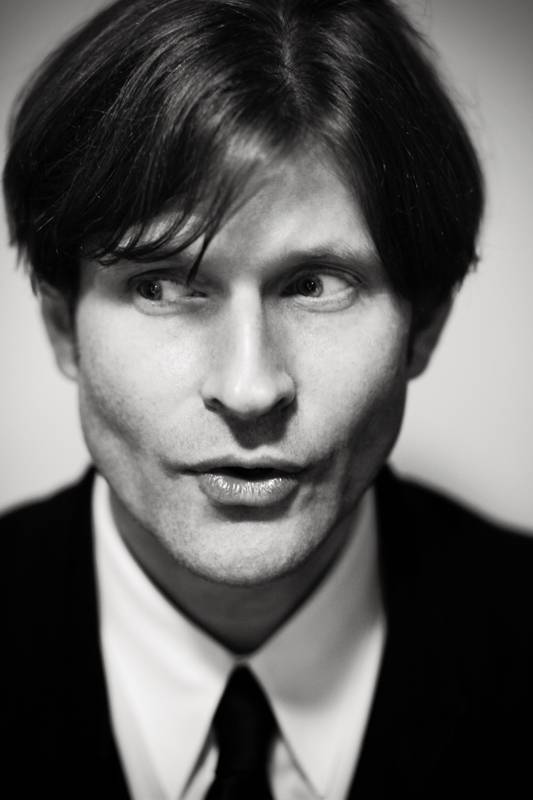 Crispin Hellion Glover has starred in a variety of films over the years, including: Back to the Future, Rivers’ Edge, Wild at Heart, The Doors, Charlie’s Angels, Willard, and Hot Tub Time Machine to name a few. You could call him a character actor but that seems too specific for him. Glover seems to break the typical mold of any sort of label, resulting in wacky, eccentric characters and unique, dare-we-say, mind-boggling projects. Some say he’s weird, but weird is just another word for intriguing in my book.
Crispin Hellion Glover has starred in a variety of films over the years, including: Back to the Future, Rivers’ Edge, Wild at Heart, The Doors, Charlie’s Angels, Willard, and Hot Tub Time Machine to name a few. You could call him a character actor but that seems too specific for him. Glover seems to break the typical mold of any sort of label, resulting in wacky, eccentric characters and unique, dare-we-say, mind-boggling projects. Some say he’s weird, but weird is just another word for intriguing in my book.
Glover now focuses his time and energy on touring to share What is it? and It is Fine! EVERYTHING IS FINE. — the films for which he is most proud. He’s become an auteur of sorts, with stylistic and distribution control over his thought provoking and rule-bending work that he shares personally with moviegoers.
Glover will be at the Art Theater this Wednesday and Thursday night at 7:30 p.m. to show his films It is Fine! EVERYTHING IS FINE. and What is it?. Describing them seems less beneficial than seeing for yourself, so I encourage you to check out the trailers (linked above), the movie still photos (below), and read the interview. These will probably be the most unique films you’ll have a chance to see in town, or anywhere for that matter, in some time.
Smile Politely: What is it? looks quite surreal, stylish, and a bit experimental (watching the trailer I was reminded a little of Pi and of 8 1/2, but maybe that was just the bugs and all the ladies). How would you describe your film? Who do you see as your audience?
Crispin Hellion Glover: I am very careful to make it quite clear that What is it? is not a film about Down’s Syndrome, but my psychological reaction to the corporate restraints that have happened in the last 20 to 30 years in film making. Specifically anything that can possibly make an audience uncomfortable is necessarily excised or the film will not be corporately funded or distributed. This is damaging to the culture because it is the very moment when an audience member sits back in their chair looks up at the screen and thinks to their self “Is this right? What I am watching? Is this wrong? What I am watching? Should I be here? Should the filmmaker have made this? What is it?” — and that is the title of the film. What is it that is taboo in the culture? What does it mean that taboo has been ubiquitously excised in this culture’s media? What does it mean to the culture when it does not properly process taboo in its media? It is a bad thing because when questions are not being asked because these kinds of questions are when people are having a truly educational experience. For the culture to not be able to ask questions leads towards a non educational experience and that is what is happening in this culture. This stupefies this culture and that is of course a bad thing. So What is it? is a direct reaction to the contents this culture’s media. I would like people to think for themselves.
SP: Do you still keep in contact with any of the actors from What is It?
CHG: Yes!
SP: It is Fine! EVERYTHING IS FINE. is considered the second part of a trilogy, however it plays the first night at the Art Theater in town. Is this typically shown before the first film? Can you explain that choice?
CHG: I often play It is fine! EVERYTHING IS FINE. before What is it? for various marketing reasons. One of them being that more people have seen What is it? than It is fine! EVERYTHING IS FINE. and I am at least as passionate to get as many people to see It is fine! EVERYTHING IS FINE.
SP: What inspired you to make these films?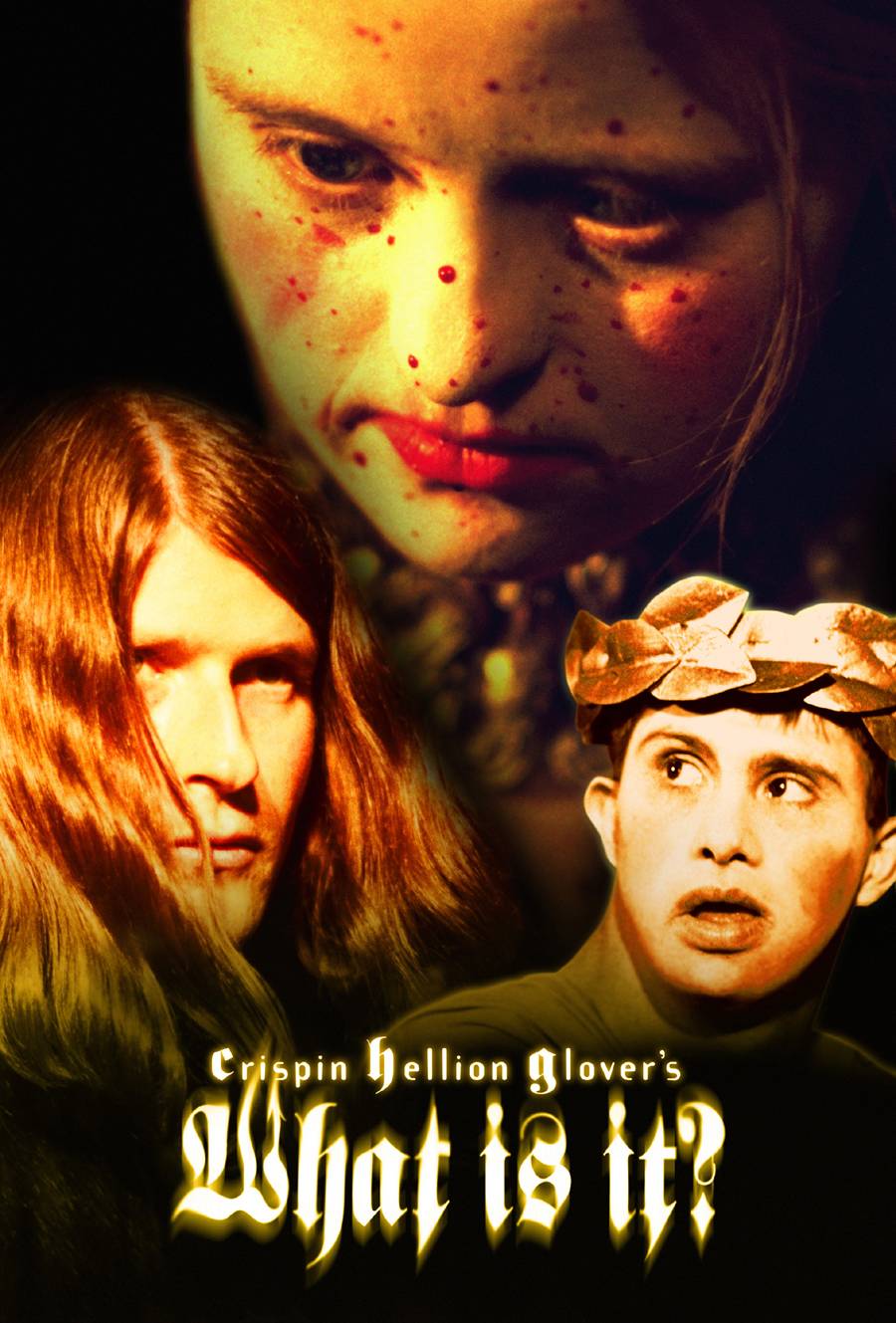
CHG: Steven C. Stewart wrote and is the main actor in part two of the trilogy titled It is fine! EVERYTHING IS FINE. I put Steve in to the cast of What is it? because he had written this screenplay which I read in 1987. When I turned What is it? from a short film into a feature I realized there were certain thematic elements in the film that related to what Steven C. Stewart’s screenplay dealt with. Steve had been locked in a nursing home for about ten years when his mother died. He had been born with a severe case of cerebral palsy and he was very difficult to understand. People that were caring for him in the nursing home would derisively call him an “M.R.,” short for “Mental Retard.” This is not a nice thing to say to anyone, but Steve was of normal intelligence. When he did get out he wrote his screenplay. Although it is written in the genre of a murder detective thriller, truths of his own existence come through much more clearly than if he had written it as a standard autobiography.
Steven C. Stewart’s own true story was fascinating, and then the beautiful story and the naïve — including his fascination of women with long hair — and the graphic violence and sexuality and the revealing truth of his psyche from the screenplay were all combined. A specific marriage proposal scene was the scene I remember reading that made me think, “I will have to be the person to produce/finance this film.”
SP: What was the process like for you once you got started making the films?
CHG: As I have stated, I put Steven C. Stewart into What is it? when I turned What is it? into a feature film. Originally What is it? was going to be a short film to promote the concept to corporate film funding entities that work with a cast wherein most characters are played by actors with Down’s Syndrome. Steve had written his screenplay in the late 1970s. I read it in 1987 and as soon as I had read it I knew I had to produce the film. Steven C. Stewart died within a month after we finished shooting the film. Cerebral palsy is not [sic] generative, but Steve was 62 when we shot the film. One of Steve’s lungs had collapsed because he had started choking on his own saliva and he got pneumonia.
I specifically started funding my own films with the money I make from the films I act in when Steven C. Stewart’s lung collapsed in the year 2000; this was around the same time that the first Charlie’s Angels film was coming to me. I realized that the money I made from that film I could put straight into the Steven C. Stewart film. That is exactly what happened. I finished acting in Charlie’s Angels and then went to Salt Lake City where Steven C. Stewart lived. I met with Steve and David Brothers, with whom I co-directed the film. I went back to L.A. and acted in a lower budget film for about five weeks and David Brothers started building the sets. Then I went straight back to Salt Lake and we completed shooting the film within about six months in three separate smaller productions. Then Steve died within a month after we finished shooting. I am relieved to have gotten this film finally completed because ever since I read the screenplay in 1987 I knew I had to produce the film and also produce it correctly.
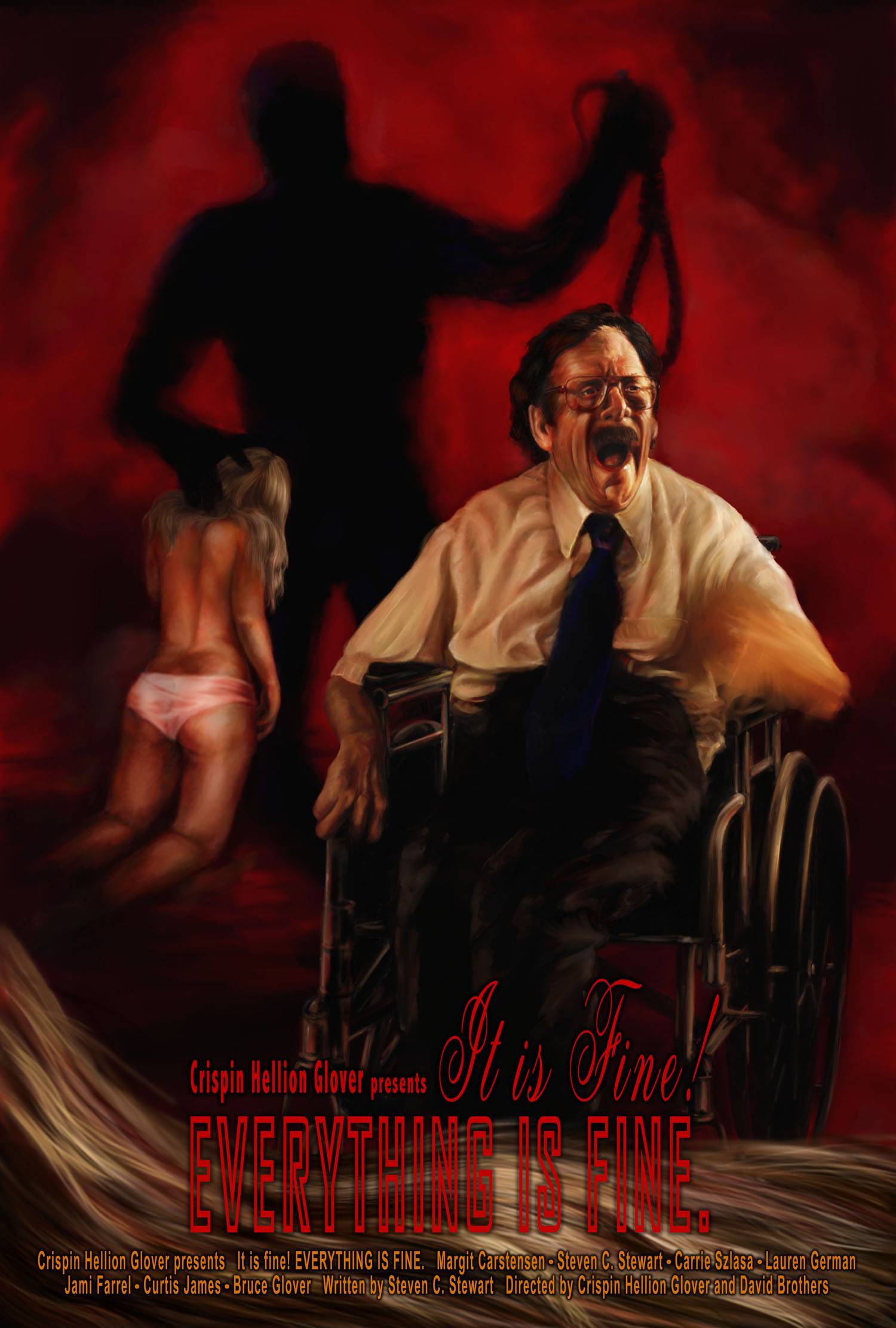 SP: So you were absolutely determined to finish the project.
SP: So you were absolutely determined to finish the project.
CHG: I would not have felt right about myself if we had not gotten Steve’s film made, I would have felt that I had done something wrong and that I had actually done a bad thing if I had not gotten it made. So I am greatly relieved to have completed it, especially since I am very pleased with how well the film has turned out. We shot It is fine! EVERYTHING IS FINE. while I was still completing What it? and this is partly why What is it? took a long time to complete.
I am very proud of the film as I am of What is it? I feel It is fine! EVERYTHING IS FINE. will probably be the best film I will have anything to do with in my entire career.
SP: How do you feel about your acting career? And how has it helped to influence your filmmaking ventures?
CHG: After Charlie’s Angels came out it did very well financially and was good for my acting career. I started getting better roles that also paid better and I could continue using that money to finance my films that I am so truly passionate about. I have been able to divorce myself from the content of the films that I act in and look at acting as a craft that I am helping other filmmakers to accomplish what it is that they want to do. Usually filmmakers have hired me because there is something they have felt would be interesting to accomplish with using me in their film and usually I can try to do something interesting as an actor. If for some reason the director is not truly interested in doing something that I personally find interesting with the character then I can console myself that with the money I am making to be in their production I can help to fund my own films that I am so truly passionate about. Usually though, I feel as though I am able to get something across as an actor that I feel good about. It has worked out well.
SP: Why did you decide to tour with the films and be a part of the showing personally?
CHG: The live aspect of the shows I perform before the films I tour with are not to be underestimated. This is a large part of how I bring audiences into the theater and a majority of how I recoup is by what is charged for the live show and what I make from selling the books after the shows. For “Crispin Hellion Glover’s Big Slide Show” I perform a one-hour dramatic narration of eight different books I have made over the years. The books are taken from old books from the 1800s that have been changed in to different books from what they originally were. They are heavily illustrated with original drawings and reworked images and photographs.
The fact that I tour with the film helps the distribution element. I consider what I am doing to be following in the steps of vaudeville performers. Vaudeville was the main form of entertainment for most of the history of the U.S. It has only relatively recently stopped being the main source of entertainment, but that does not mean this live element mixed with other media is no longer viable. In fact it is apparent that it is sorely missed.
SP: What advantages are there to being able to control so much of your work, even the business side?
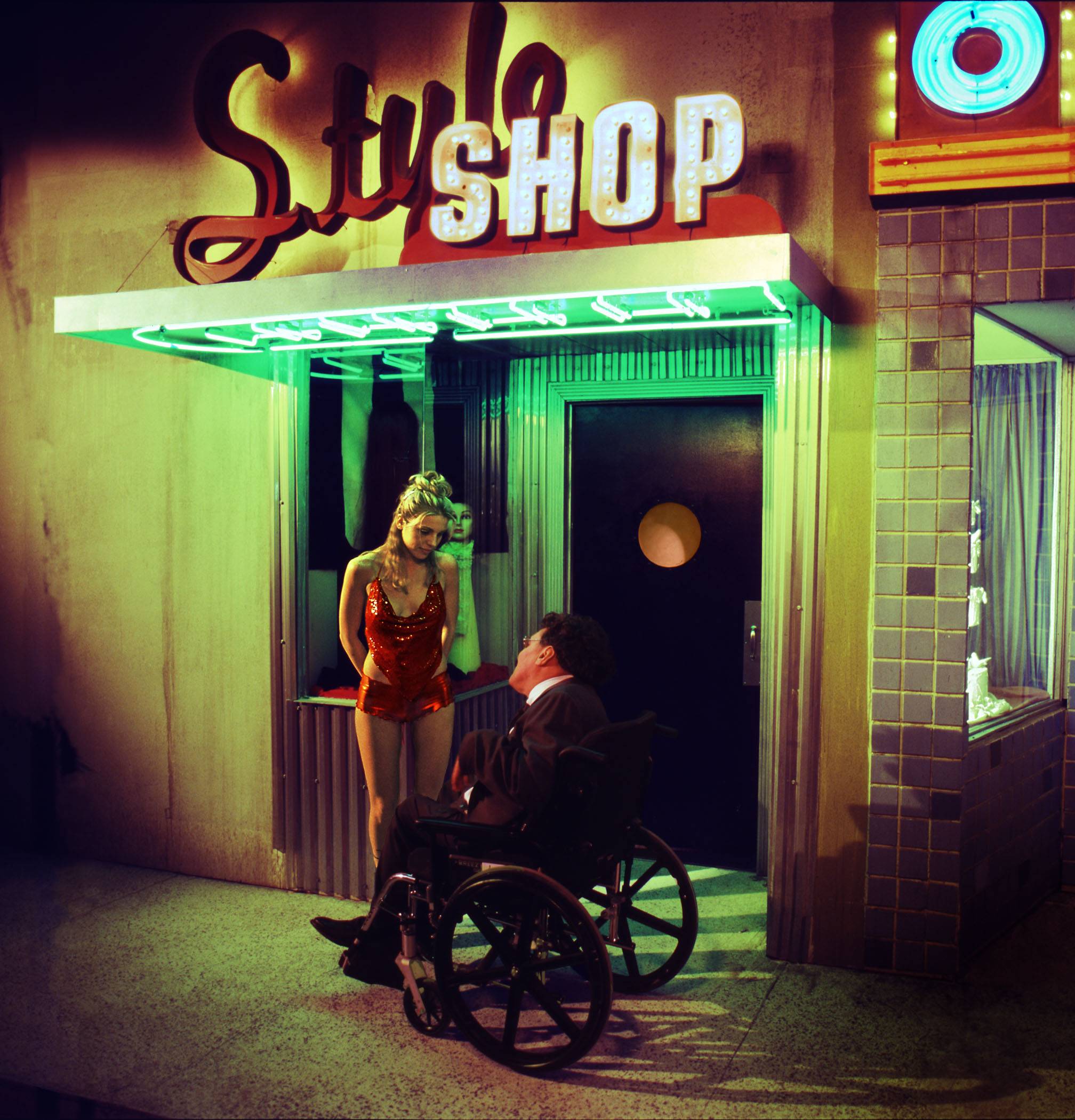 CHG: Volcanic Eruptions was a business I started in Los Angeles in 1988 as Crispin Hellion Glover doing business as Volcanic Eruptions. It was a name to use for my book publishing company. About a year later I had a record/CD come out with a corporation called Restless Records. About then, I had sold the same amount of books as CD/records had sold, and it was very clear to me that because I had published my own books that I had a far greater profit margin. It made me very suspicious of working with corporations as a business model. Financing/Producing my own films is based on the basic business model of my own publishing company. There are benefits and drawbacks about self-distributing my own films. In this economy it seems like touring with the live show and showing the films with a book signing is a very good basic safety net for recouping the monies I have invested in the films.
CHG: Volcanic Eruptions was a business I started in Los Angeles in 1988 as Crispin Hellion Glover doing business as Volcanic Eruptions. It was a name to use for my book publishing company. About a year later I had a record/CD come out with a corporation called Restless Records. About then, I had sold the same amount of books as CD/records had sold, and it was very clear to me that because I had published my own books that I had a far greater profit margin. It made me very suspicious of working with corporations as a business model. Financing/Producing my own films is based on the basic business model of my own publishing company. There are benefits and drawbacks about self-distributing my own films. In this economy it seems like touring with the live show and showing the films with a book signing is a very good basic safety net for recouping the monies I have invested in the films.
There are other beneficial aspects of touring with the shows other than monetary elements. There are benefits that I am in control of the distribution and personally supervise the monetary intake of the films that I am touring with. I also control piracy in this way because digital copy of this film is stolen material and highly prosecutable. It is enjoyable to travel and visit places, meet people, perform the shows, and have interaction with the audiences and discussions about the films afterwards. The forum after the show is also not to [be] under-estimated as a very important part of the show for the audience. This also makes me much more personally grateful to the individuals who come to my shows, as there is no corporate intermediary.
SP: What are the disadvantages?
CHG: The drawbacks are the significant amount of time and energy [spent] to promote and travel and perform the shows. Also the amount of people seeing the films is much smaller than if I were to distribute the films in a more traditional sense. The way I distribute my films is certainly not traditional in the contemporary sense of film distribution, but perhaps is very traditional when looking further back at vaudeville era film distribution. If there are any filmmakers that are able to utilize aspects of what I am doing then that is good. It has taken many years to organically develop what I am doing now as far as my distribution goes.
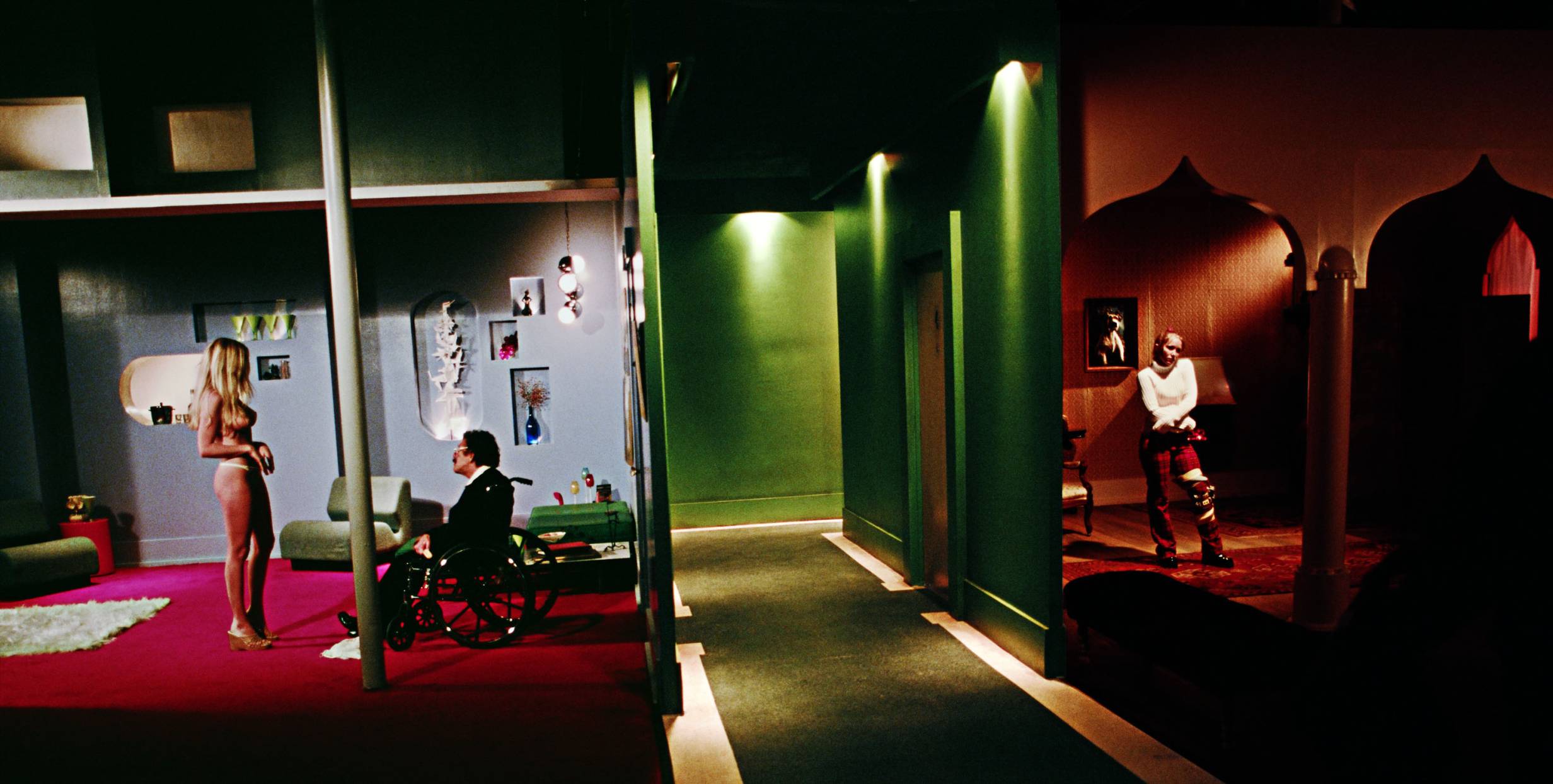
SP: How long have you been writing/creating these books that you now present to an audience?
CHG: I started making my books in 1983 for my own enjoyment without the concept of publishing them. I had always written and drawn and the books came as an accidental outgrowth of that. I was in an acting class in 1982 and down the block was an art gallery that had a book store upstairs. In the book store there was a book for sale that was an old binding taken from the 1800s and someone had put their artwork inside the binding. I thought this was a good idea and set out to do the same thing. I worked a lot with India ink at the time and was using the India ink on the original pages to make various art. I had always liked words in art and left some of the words on one of the pages. I did this again a few pages later and then when I turned the pages I noticed that a story started to naturally form and so I continued with this. When I was finished with the book I was pleased with the results and kept making more of them. I made most of the books in the 80s and very early 90s. Some of the books utilize text from the binding it was taken from and some of them are basically completely original text. Sometimes I would find images that I was inspired to create stories for or sometimes it was the binding or sometimes it was portions of the texts that were interesting. Altogether, I made about twenty of them.
SP: How does that creative process compare to making films?
CHG: When I was editing my first feature film What is it? there was a reminiscent quality to the way I worked with the books because as I was expanding the film into a feature from what was originally going to be a short, I was taking film material that I had shot for a different purpose originally and re-purposed it for a different idea and I was writing and shooting and ultimately editing at the same time. Somehow I was comfortable with this because of similar experiences with making my books.
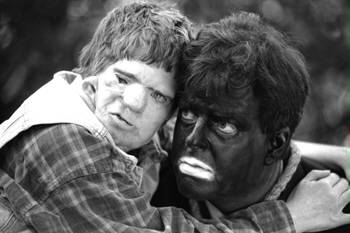 SP: So how did you come to a decision to present these books in slide show form?
SP: So how did you come to a decision to present these books in slide show form?
CHG: When I first started publishing the books in 1988, people said I should have book readings. But the books are so heavily illustrated and the way the illustrations are used within the books help to tell the story, so the only way for the books to make sense was to have visual representations of the images. This is why I knew a slide show was necessary. It took a while, but in 1992 I started performing what I now call “Crispin Hellion Glover’s Big Side Show Part 1.” The content of that show has not changed since I first started performing it. But the performance of the show has become more dramatic as opposed to more of a reading. For performing the shows I have always worn a black suit, white shirt, and black tie with dress back shoes. The performance is a mixture of presentation and stepping into characters and characterizations of the styles of books, so the dress has to be a neutral presentational suit.
People sometimes get confused as to what “Crispin Hellion Glover’s Big Slide Show (Parts 1&2)” is so now I always let it be known that it is a one hour dramatic narration of eight different profusely illustrated books that I have made over the years. The illustrations from the books are projected behind me as I perform the show. There is a second slide show now that also has eight books. Part 2 is performed if I have a show with Part 1 of the “IT” trilogy and then on the subsequent night I will perform the second slide show and Part 2 of the “IT” trilogy. The second slide show has been developed over the last several years and the content has changed as it has been developed, but I am very happy with the content of the second slide show now.
SP: What has the reception been for these films as you’ve toured around? Has there been anyone who has really challenged you/upset you with his/her reactions and criticisms?
CHG: The purpose of the films is to promote questions and discussions. I am very conscientious of answering all questions respectfully and fully. There has never been a question that has upset me. I am genuinely grateful to the audiences that come to my show. There are people that can become very upset every once in a while, but that is relatively rare. I always want to give people time to say what they want to say in front of the audience even if sometimes the audience starts to get upset with the upset person. It can have a very lively atmosphere when that happens and I consider it a part of the show. There is never any harm done, as again the purpose of the shows is to evoke thought and questioning and it is successful when that sort of thing happens.
SP: When did you begin using ‘Hellion’ as part of your name? Why the addition?
CHG: I began using “Hellion” as my middle name at birth. I was born in New York. Not too long before I was born, my parents went to see an off-Broadway production of Henry V, by Shakespeare and liked the production very much, and liked the name so [they] gave it to me. My father’s middle name is Herbert. He never liked his middle name Herbert. So as a young struggling actor in New York he would say to himself, “I am Bruce H. Glover, Bruce Hellion Glover. I am a hellion, a troublemaker.” And that would make him feel good. He told my mother this was his real middle name. When they were married she saw him writing on the marriage certificate Bruce Herbert Glover and she thought, “Who am I marrying?” They gave Hellion to me as my real middle name. I had always written and drawn as a child and I would always sign my drawing and writing with my whole name Crispin Hellion Glover. When I started acting professionally at 13, which was something I had decided on my own I could do as a profession at a relatively young age, it became apparent that I had to choose a professional acting name for SAG. I thought my whole name was too long for acting and just used my first and last name. When I started publishing my books I simply continued using the name I had always used for writing and drawing and had put in my books. This is also why I use my whole name for my own films.
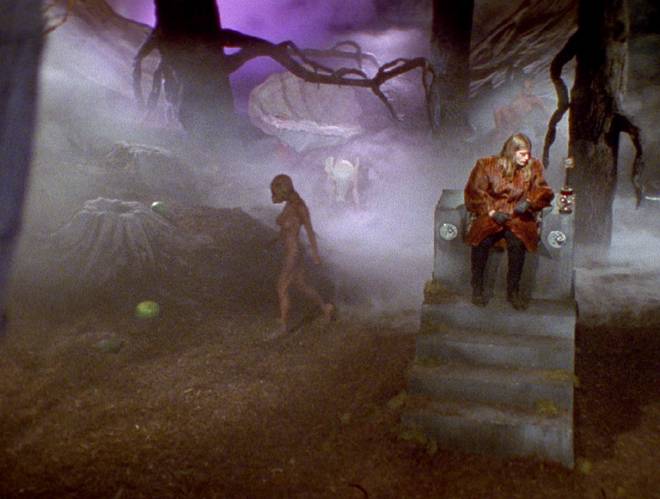
SP: You seem to be trying to offer something creative and innovative to the film world. What’s your opinion of most new releases? Are there still films being made that you truly enjoy?
CHG: I most recently loved Herzog’s Cave of Forgotten Dreams. Some of my favorite films have been made by the following directors: Werner Herzog, Rainer Werner Fassbinder, Luis Buñuel, Stanley Kubrick, Todd Browning, FW Murnau, Fritz Lang, Akira Kurusawa, Frank Wysbar, Milos Foreman, Roman Polanski, Frederico Fellini, Karel Zeman, Abbas Kiarostami, Wong Kar Wei, Ken Russell, Gaspar Noe, Orson Wells, John Cassavetis, Timothy Carey, and Woody Allen.
SP: You’ve worked with some great directors over the years. Who was your favorite to work with?
CHG: I have had a lot of different kinds of positive experiences with directors. Some have been the result of the work, and some have been people I have admired previous to the work I did with them, and some it was just interesting to learn from how they worked. In any case, I would say there were positive aspects to working with every director I have ever worked with, but some that stand out for different reasons are: Werner Herzog, Milos Foreman, Jerzy Skolimowski, David Lynch, Tim Hunter, Oliver Stone, Tim Burton, Trent Harris, Lasse Hallström, Robert Zemeckis, and Jim Jarmusch.
SP: What advice do you have for young filmmakers who want to create their own art?
CHG: As Joseph Campbell would say, “Follow your bliss.” I would also add that it is good to keep your overhead low and then you will be able to afford to continue to follow your bliss.
SP: Do you have anything else you’d like to add?
CHG: People who are interested in when I will be back should join up on the email list at CrispinGlover.com, as they will be emailed with information as to where I will be with whatever film I tour with. It is, by far, the best way to know how to see the films.








